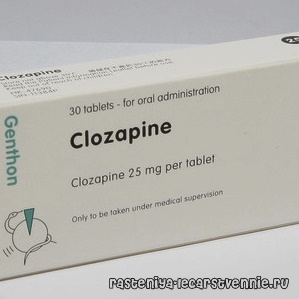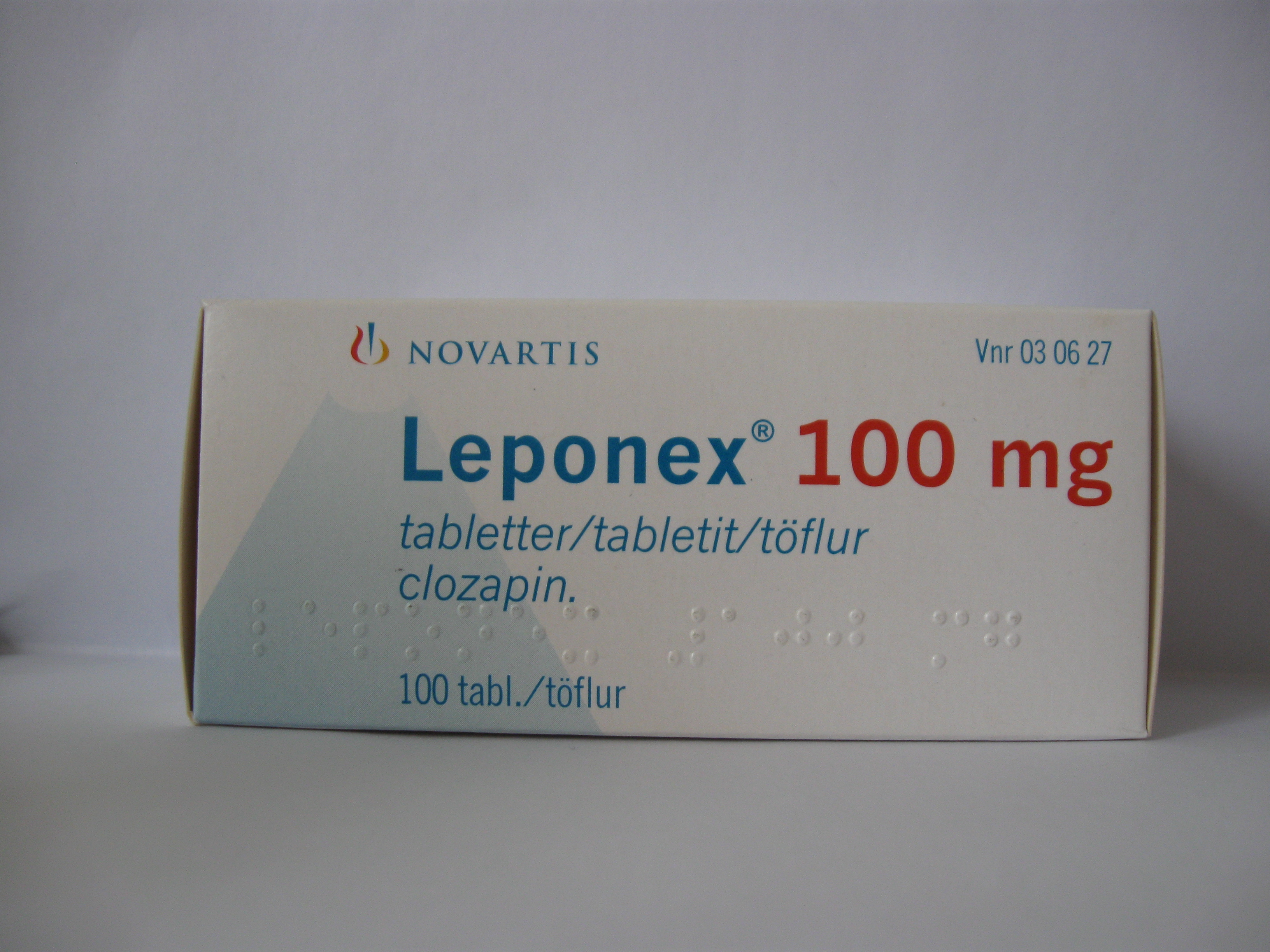Clozapine
What’s of Interest:
- Clozapine REMS and ANC monitoring update
Brands
- Clozaril, Leponex, Versacloz (oral suspension), Fazaclo ODT (oral disintegrating tablet)

Class
- Atypical antipsychotic (serotonin-dopamine antagonist; second-generation antipsychotic; also a mood stabilizer)
Approved For:
- Treatment-resistant schizophrenia
- Reduction in risk of recurrent suicidal behavior in patients with schizophrenia or schizoaffective disorder
Formulation:
- Tablet 12.5 mg, 25 mg scored, 50 mg, 100 mg scored
- Orally disintegrating tablet 12.5 mg, 25 mg, 50 mg, 100 mg, 150 mg, 200 mg
- Oral suspension 50 mg/mL
Dosing Tips:
- Initial 25 mg at night; increase by 25–50 mg/day every 48–72 hours as tolerated; obtain trough plasma level on 200 mg at bedtime
- The threshold for response is 350 ng/mL
- Median time to response after achieving therapeutic plasma levels of (350 ng/mL) is approximately 3 weeks; if there is no response after 3 weeks of therapeutic plasma levels, recheck plasma levels and continue titration
- Levels greater than 700 ng/mL are often not well tolerated
- No evidence to support dosing that results in plasma levels greater than 1,000 ng/mL
- Plasma half-life suggests twice daily administration, but in practice, it may be given once a day at night
- Doses greater than 500 mg per day may require a split dose
- Because of the monitoring schedule, prescriptions are generally given 1 week at a time for the first 6 months, then every 2 weeks for months 6–12, and then monthly after 12 months
- Lower ANC threshold for starting clozapine:
- General population: ≥1,500/µL
- Benign ethnic neutropenia (BEN): ≥1,000/µL
- If treatment is discontinued for more than 2 days, reinitiate with 12.5 mg once or twice daily; if that dose is tolerated, the dose may be increased to the previously therapeutic dose more quickly than recommended for initial treatment
- If abrupt discontinuation of clozapine is necessary, the patient must be covered for cholinergic rebound; those with higher clozapine plasma levels may need extremely high doses of anticholinergic medications to prevent delirium and other rebound symptoms
- Slow off-titration is preferred if possible to avoid cholinergic rebound and rebound psychosis
Contraindications:
- In patients with a myeloproliferative disorder
- In patients with uncontrolled epilepsy
- In patients with paralytic ileus
- In patients with CNS depression
- If there is a proven allergy to clozapine
NOTE THAT
• Clozapine is the gold standard treatment for refractory schizophrenia
• Clozapine is not used the first line due to side effects and monitoring burden
• In strictly-defined refractory schizophrenia, 50-60% of patients will respond to clozapine
• The response rate to another atypical antipsychotic in the refractory patient population ranges from 0–9%
• May reduce violence and aggression in difficult cases, including forensic cases
• Reduces suicide in schizophrenia
• May reduce substance abuse
• Little or no prolactin elevation, motor side effects, or tardive dyskinesia
• Cigarette smoke can decrease clozapine levels and patients may be at risk for relapse if they begin or increase smoking
• The US FDA has changed the requirements for monitoring, prescribing, dispensing, and receiving clozapine in order to address concerns related to neutropenia; in addition to updating the prescribing information for clozapine, the FDA has approved a new, shared risk evaluation and mitigation strategy (REMS)
• The Clozapine REMS program replaces the six existing clozapine registries, which are maintained by individual clozapine manufacturers. Prescribers, pharmacies, and patients will now be required to enroll in a single centralized program; patients already treated with clozapine will be automatically transferred. In order to prescribe and dispense clozapine, prescribers and pharmacies will be required to be certified in the Clozapine REMS Program.
Side Effects
Weight Gain:

Sedation:
Other Notable or Dangerous Side Effects:
- Orthostasis
- Slow titration
- Minimize use of other alpha 1 antagonists
- If orthostasis remains a problem, Florines 0.1–0.3 mg qd for volume expansion (contraindicated in congestive heart failure)
- Sialorrhea
- Atropine 1% drops, 1–3 drops sublingually at bedtime; can use up to 3 times per day if needed
- Ipratropium bromide 0.06% spray, 1–3 sprays intra-orally at bedtime; can use up to 3 times per day if needed
- Avoid use of systemic anticholinergic agents, which increase risk of ileus (benztropine, glycopyrrolate, etc.)
- Constipation, paralytic ileus
- Avoid psyllium as it may worsen symptoms
- All patients should receive docusate 250 mg when starting clozapine
- If needed, add Miralax 17 g
- If docusate + Miralax are ineffective, add either bisacodyl or sennosides
- If constipation still remains a problem, prescribe lubiprostone 8–24 mcg twice per day
- Sedation
- Slow titration
- Take at bedtime
- Tachycardia
- Atenolol 12.5 mg QD, increase to keep resting HR<100 bpm
- Weight gain and metabolic effects
- Consider prophylactic metformin; start at 500 mg for 1 week, then increase dose
- All patient should be referred for lifestyle management and exercise
- Myocarditis (rare; occurs only in the first 6 weeks of treatment)
- Baseline: check troponin I/T, CRP
- Obtain workup if patient reports chest pain
- Weekly troponin I/T and CRP for the first month
- Clozapine should be stopped if troponin ≥ 2x ULN or CRP > 100 mg/L
- Benign fever (~20%)
- In the absence of elevated troponin and myocarditis symptoms, fever is usually self-limited and there is no need to stop clozapine
- Seizures
- Valproate for myoclonic or generalized seizures
- Avoid phenytoin and carbamazepine because of kinetic interactions
- Pulmonary embolism (may include deep vein thrombosis or respiratory symptoms)
- Dilated cardiomyopathy
- Late complication; consider annual echocardiogram
- Increased risk of death and cerebrovascular events in elderly patients with dementia-related psychosis
Drug Interactions:
- Use clozapine plasma levels to guide treatment due to a propensity for drug interactions
- In presence of a strong CYP450 1A2 inhibitor (e.g., fluvoxamine, ciprofloxacin): use 1/3 the dose of clozapine
- In the presence of a strong CYP450 1A2 inducer (e.g., cigarette smoke), clozapine plasma levels are decreased
- May need to decrease clozapine dose by up to 50% during periods of extended smoking cessation (>1 week)
- Strong CYP450 2D6 inhibitors (e.g., bupropion, duloxetine, paroxetine, fluoxetine) can raise clozapine levels; dose adjustment may be necessary
- Strong CYP450 3A4 inhibitors (e.g., ketoconazole) can raise clozapine levels; dose adjustment may be necessary
- Clozapine may enhance the effects of antihypertensive drugs
Cardiac Impairment:
- Should be used with caution, particularly if the patient is taking concomitant antihypertensive or alpha 1 antagonist
Renal Impairment:
- Should be used with caution
Hepatic Impairment:
- Should be used with caution
